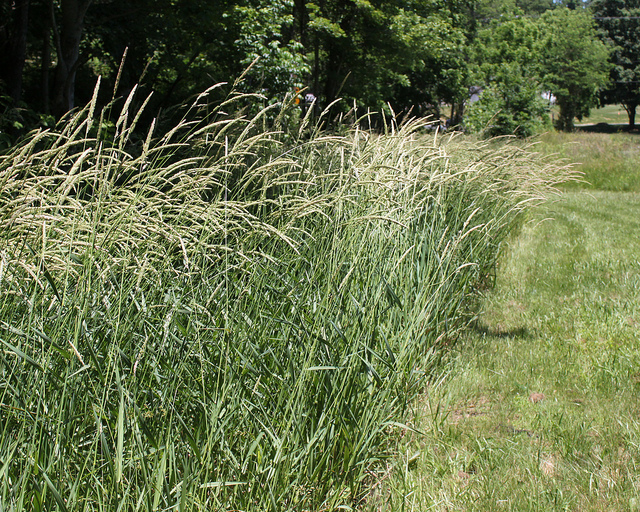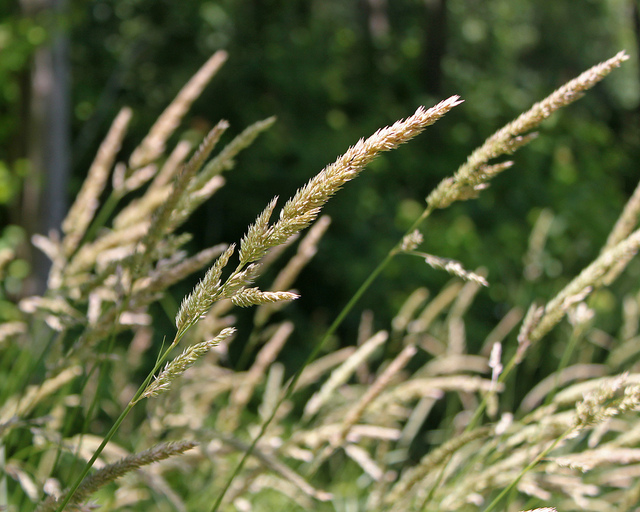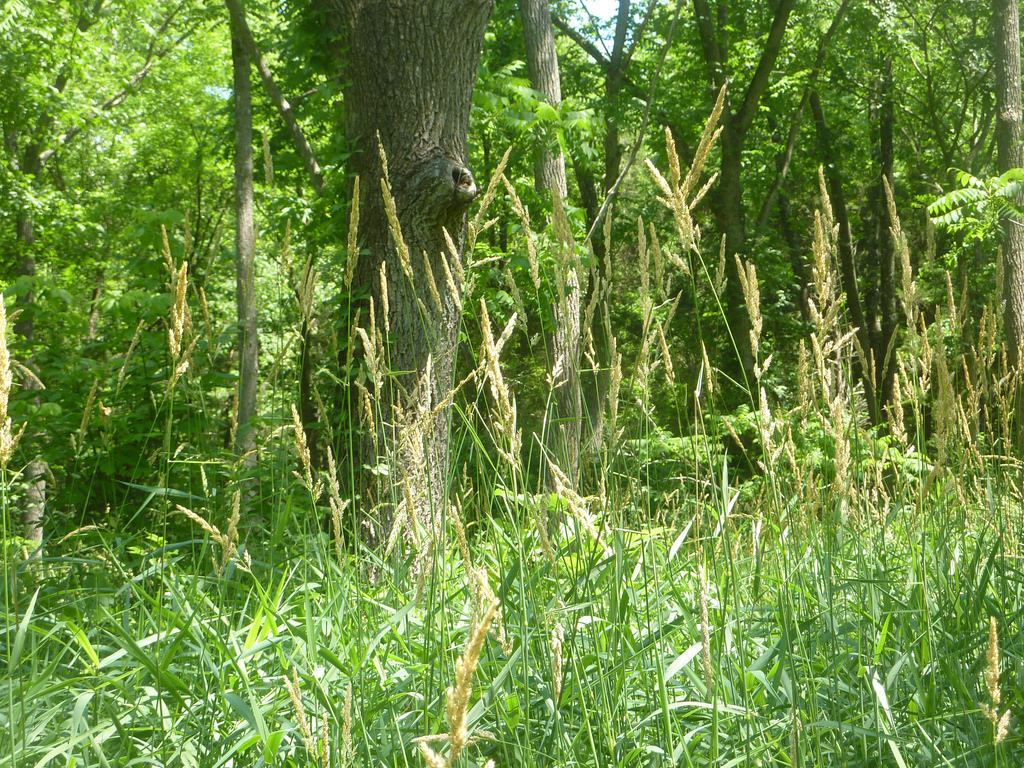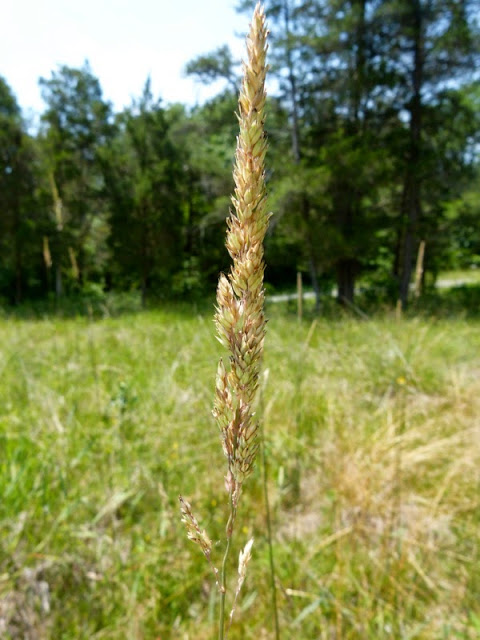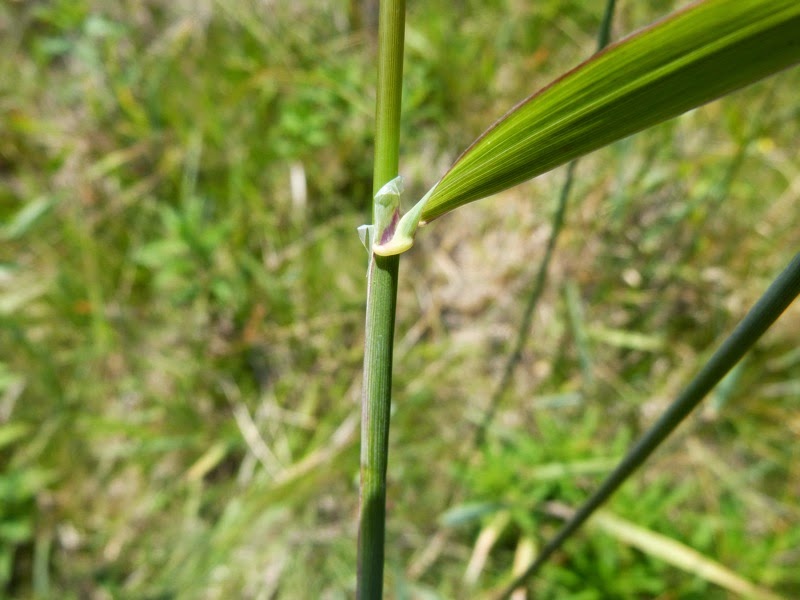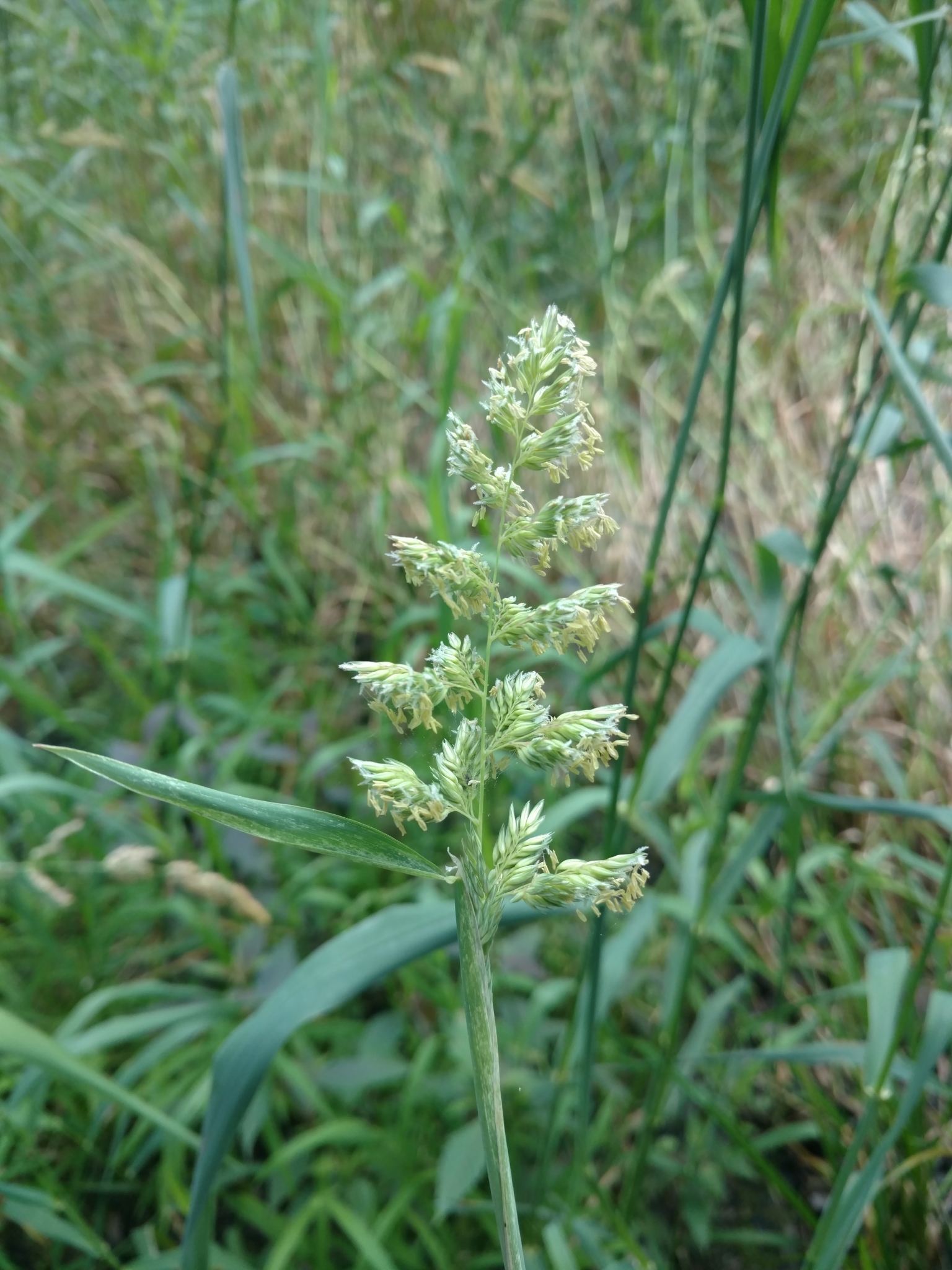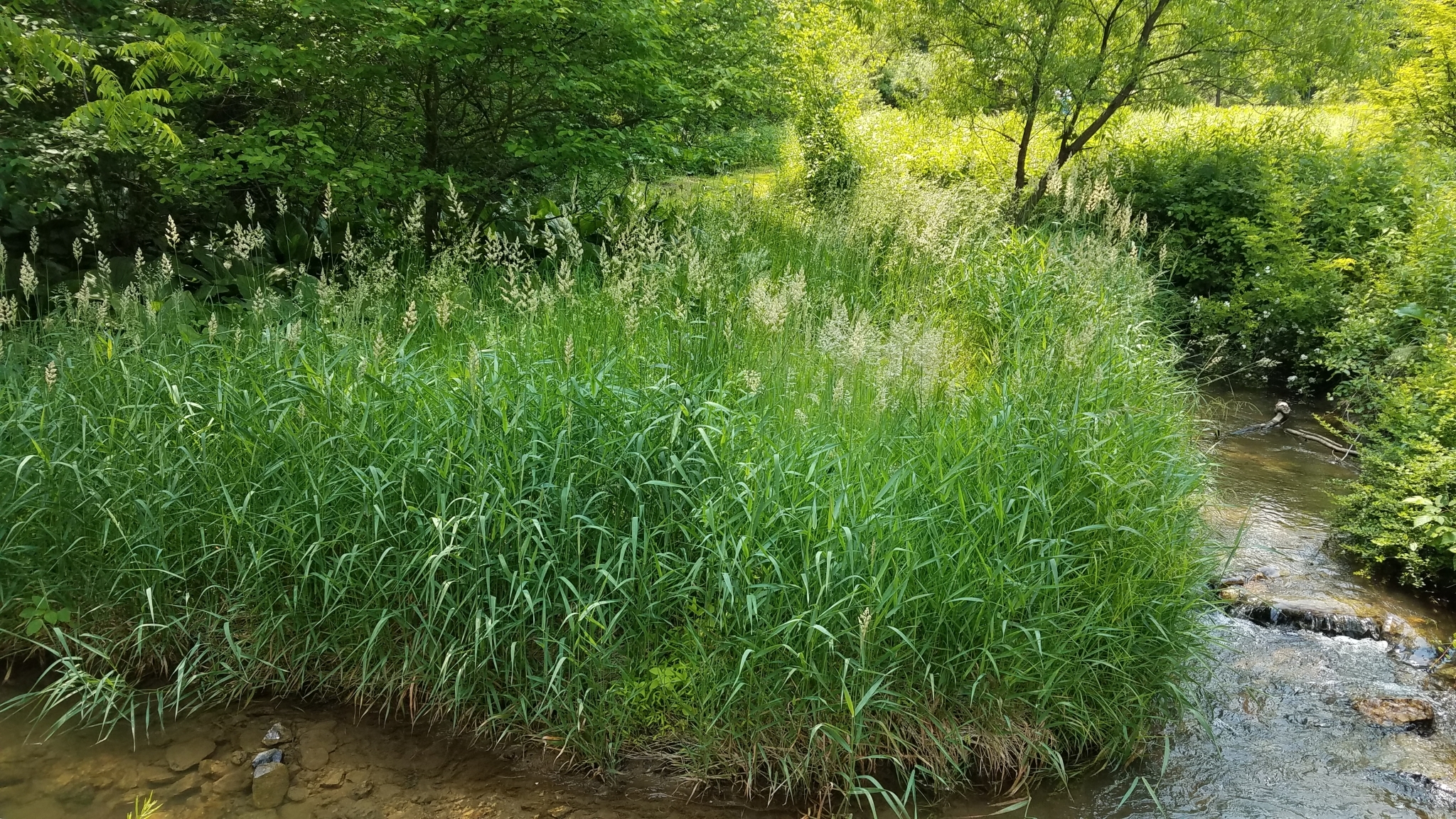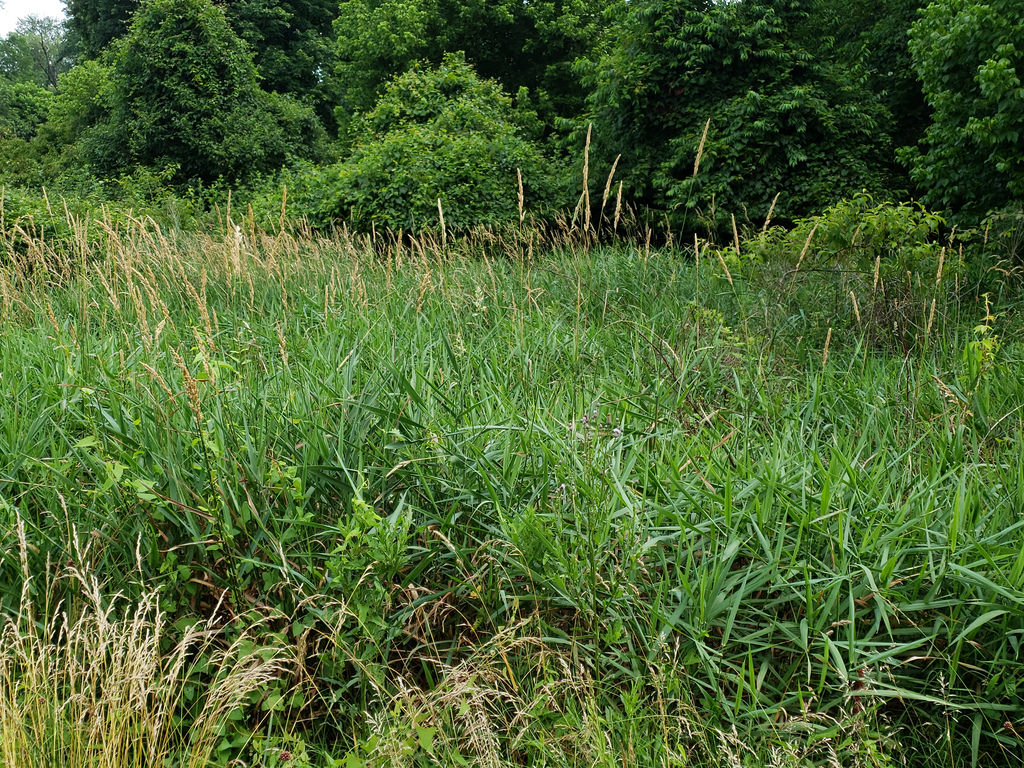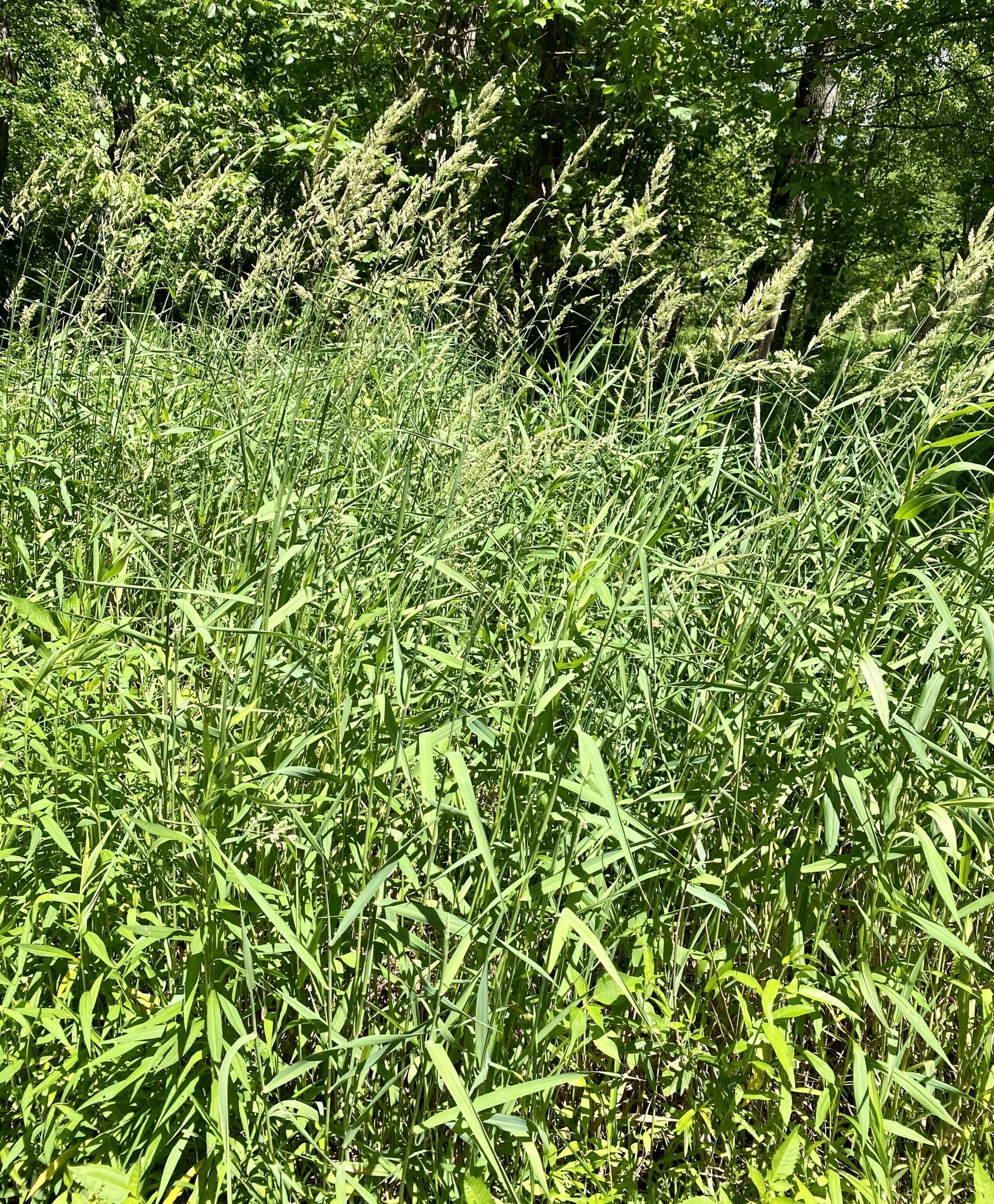Map Snapshot

















84 Records
Status
Reed Canarygrass is an invasive species in Maryland (MISC 2022).
Seasonality Snapshot
Source: Wikipedia
| Phalaris arundinacea | |
|---|---|

| |
| Scientific classification | |
| Kingdom: | Plantae |
| Clade: | Tracheophytes |
| Clade: | Angiosperms |
| Clade: | Monocots |
| Clade: | Commelinids |
| Order: | Poales |
| Family: | Poaceae |
| Subfamily: | Pooideae |
| Genus: | Phalaris |
| Species: | P. arundinacea
|
| Binomial name | |
| Phalaris arundinacea | |

Phalaris arundinacea, or reed canary grass,[1] is a tall, perennial bunchgrass that commonly forms extensive single-species stands along the margins of lakes and streams and in wet open areas, with a wide distribution in Europe, Asia, northern Africa and North America.[2] Other common names for the plant include gardener's-garters and ribbon grass in English, alpiste roseau in French, Rohrglanzgras in German, kusa-yoshi in Japanese, caniço-malhado in Portuguese, and hierba cinta and pasto cinto in Spanish.[3]
Description
[edit]The stems can reach 2 metres (6.6 ft) in height.[4] The leaf blades are usually green, but may be variegated. The panicles are up to 30 centimetres (12 in) long.[4] The spikelets are light green, often streaked with darker green or purple.[5] This is a perennial grass which spreads underground by its thick rhizomes.[4]
Uses
[edit]A number of cultivars of P. arundinacea have been selected for use as ornamental plants, including variegated (striped) cultivars – sometimes called ribbon grass – such as 'Castor' and 'Feesey'. The latter has a pink tinge to the leaves.[6] When grown, although drought-tolerant, it likes abundant water and can even be grown as an aquatic plant.[6]
Reed canary grass grows well on poor soil and contaminated industrial sites, and researchers at Teesside University's Contaminated Land & Water Centre have suggested it as the ideal candidate for phytoremediation in improving soil quality and biodiversity at brownfield sites.[citation needed]
The grass can also easily be turned into bricks or pellets for burning in biomass power stations.[7] Furthermore, it provides fibers which find use in pulp and papermaking processes.[8]
P. arundinacea is also planted as a hay crop or for forage.
This species of Phalaris may also be used as a source for the psychedelic drugs DMT, 5-MeO-DMT and 5-OH-DMT (bufotenin), as well as Hordenine and 5-MeO-NMT;[9] however, N,N-DMT is considered most desirable. Although the concentrations of these compounds is lower than in other potential sources, such as Psychotria viridis and Mimosa tenuiflora, large enough quantities of the grass can be refined to make an ad hoc ayahuasca brew.
Ecology
[edit]In many places, P. arundinacea is an invasive species in wetlands, particularly in disturbed areas.[10] It has been reported as an invasive weed in floodplains, riverside meadows, and other wetland habitat types around the world. When P. arundinacea invades a wetland, it inhibits native vegetation and reduces biological diversity.[11] It alters the entire ecosystem.[12] The grass propagates by seed and rhizome,[10] and once established, is difficult to eradicate.[13]
Distribution
[edit]P. arundinacea now has worldwide distribution. It is regarded as native to both North America and Eurasia, but this is debated and it appears that the populations in North America are made up of a mixture of cultivars of both those that were introduced from Europe and indigenous varieties.[14]
Chemical properties
[edit]Specimens contain varying levels of hordenine and gramine.[15]
Leaves of P. arundinacea contain DMT, 5-MeO-DMT and related compounds.[16] Levels of beta-carbolines[17] and hordenine[18] have also been reported.
References
[edit]- ^ Lee, Sangtae; Chang, Kae Sun, eds. (2015). English Names for Korean Native Plants (PDF). Pocheon: Korea National Arboretum. p. 568. ISBN 978-89-97450-98-5. Retrieved 12 March 2019 – via Korea Forest Service.
- ^ "Phalaris arundinacea". Germplasm Resources Information Network. Agricultural Research Service, United States Department of Agriculture. Retrieved 2017-12-15.
- ^ Phalaris arundinacea. USDA NRCS Plant Guide.
- ^ a b c Waggy, Melissa, A. (2010). "Phalaris arundinacea". Fire Effects Information System. U.S. Department of Agriculture, Forest Service, Rocky Mountain Research Station, Fire Sciences Laboratory.
{{cite web}}: CS1 maint: multiple names: authors list (link) - ^ Phalaris arundinacea. Flora of China.
- ^ a b Phalaris arundinacea var. picta 'Feesey'.
- ^ Bond, Sam (2010-02-23). "Candidate crops for contaminated land biofuels crop considered". edie.net/crc. Retrieved 2010-04-17.
- ^ Andersson, B. and E. Lindvall. Use of biomass from reed canary grass (Phalaris arundinacea) as raw material for production of paper pulp and fuel. Archived 2016-03-04 at the Wayback Machine internationalgrasslands.org.
- ^ Wilkinson, S. (1958). "428. 5-Methoxy-N-methyltryptamine: a new indole alkaloid from Phalaris arundinacea L". Journal of the Chemical Society (Resumed): 2079. doi:10.1039/jr9580002079.
- ^ a b Apfelbaum, Stephen I.; Sams, Charles E. (1997). "Ecology and control of reed canary grass (Phalaris arundinacea L.)". Natural Areas Journal. 7 (2): 69–74. JSTOR 43910930.
- ^ Kim, K. D., et al. (2006). Controlling Phalaris arundinacea (reed canarygrass) with live willow stakes: A density-dependent response. Ecological Engineering 26 219–227.
- ^ Lavergne, S. and J. Molofsky. (2004). Reed canary grass (Phalaris arundinacea) as a biological model in the study of plant invasions.[permanent dead link] Critical Reviews in Plant Sciences 23(5) 415–429.
- ^ Batzer, Darold P.; Sharitz, Rebecca R. (2006). "Wetland Restoration". Ecology of freshwater and estuarine wetlands. Berkeley, California: University of California Press. p. 395. ISBN 978-0-520-24777-2.
- ^ "Phalaris arundinacea (reed canary grass)". CABI Compendium. CABI Compendium. CABI. 2019. doi:10.1079/cabicompendium.55423. Retrieved 16 March 2020. citing, inter alia, Häfliger, Ernst; Scholz, Hildemar (1980). Grass weeds / 2, Weeds of the subfamilies 'Chloridoideae', 'Pooideae', 'Oryzoideae'. Documenta. Basel, Switzerland: CIBA-Geigy.
- ^ Woods, D. L.; Hovin, A. W.; Marten, G. C. (1979). "Seasonal Variation of Hordenine and Gramine Concentrations and Their Heritability in Reed Canarygrass". Crop Science. 19 (6): 853–857. doi:10.2135/cropsci1979.0011183X001900060026x.
- ^ Pennanen, Petrus (December 1995). "Tryptamine Carriers". Archived from the original on 6 July 1997. citing Smith, Terence A. (1977). "Review: Tryptamine and Related Compounds in Plants". Phytochemistry. 16: 171–175. doi:10.1016/S0031-9422(00)86778-3.
- ^ Marten, G. C.; Jordan, R. M.; Hovin, A. W. (1976). "Biological Significance of Reed Canarygrass Alkaloids and Associated Palatability Variation to Grazing Sheep and Cattle". Agronomy Journal. 68 (6): 909–914. Bibcode:1976AgrJ...68..909M. doi:10.2134/agronj1976.00021962006800060017x.
- ^ Saxton, J. Edwin; et al. (1974). The alkaloids Volume 4, A review of the literature published between July 1972 and June 1973. (Specialist Periodical Reports). London: The Chemical Society. p. 130. ISBN 978-0-85186-287-3.
